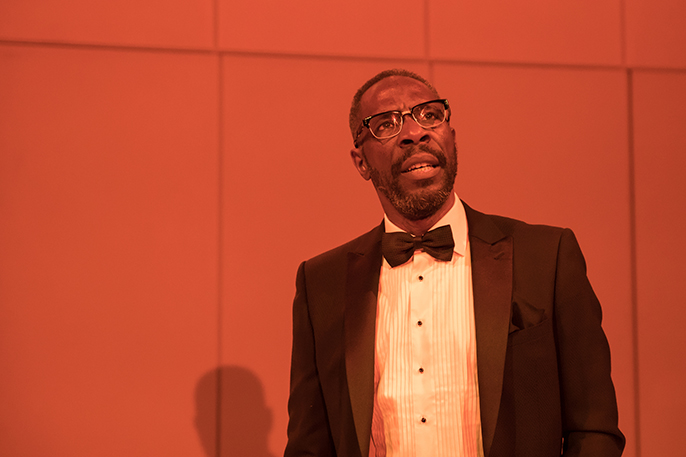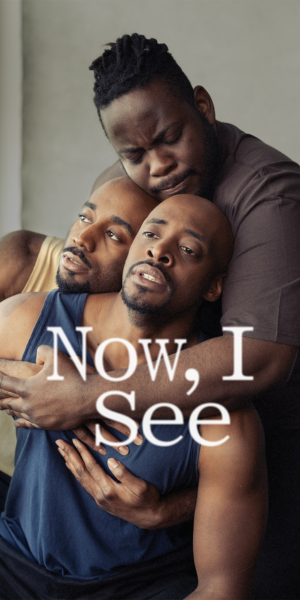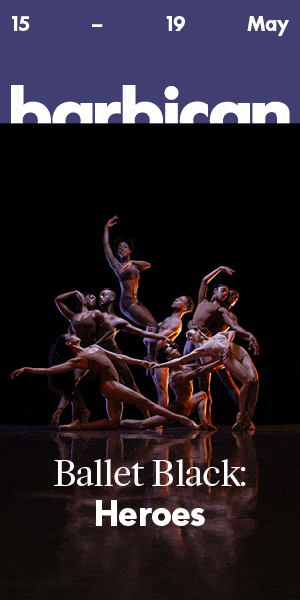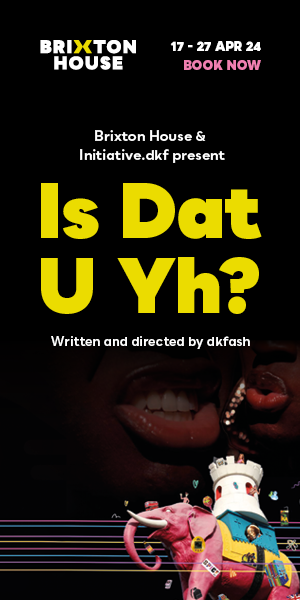The point of theatre (art) is to present ‘real life’ to an audience – except with all boring, mundane, fantastical, inconvenient, or inappropriate elements removed.
This seems to be the ethos of the theatrical agency run by husband and wife duo “Andrew” (Julian Ovenden) and “Jennifer” (Indira Varma).
This comedic farce opens with the couple interviewing “Anne” in their plush New York offices, as they seek to coax from her a story worth selling. Mousy Anne has responded to the couple’s advert, requesting real-life stories, as a way to be seen, heard, and to feel validated. For their part, as they listen to Anne’s tale of spousal neglect, mild bondage and emotional acquiescence, the couple sees dollar signs. Now, if they could only convince her, over lunch, to ‘spice it up’ a little.
To whit, we meet “Clifford”, who is down-on-his luck and down on the street, selling his meager possessions to finance his ‘calling’ as a playwright. He manages to sell one of his treasured kitchen utensils to a disenchanted “Simon” (Andrew Needham) who, as we quickly witness, shares none of the former’s optimism, or love for theatre. Also – as “Anne” is shepherded off to lunch by the corporate couple – we find out that “Simon” is, in fact, the estranged husband she is trying desperately to escape from.
It is Indira Viram’s excellent “Jennifer”, who holds the piece together, especially in the first half. Aimed just on the right side of manic, we see her dismissive, arrogant, and aloof exterior slowly peeled away to reveal an insecure social climber, filled with fear and self-loathing. Excellent.
Later, we see “Clifford” has managed to get a meeting with Andrew and Jennifer. Having sent a screenplay to their offices many months before, he has been waiting for over three hours in the foyer for an arranged face-to-face meeting. Of course, they haven’t read his script yet; instead, ambitious secretary, “Nichole” (Ellora Torchia) is summoned – having been tasked to engage with any scripts the couple deem unworthy. She reads the treatment aloud and in front of Clifford, and delivers a positive assessment. Andrew and Jennifer, in their desire to create a commercial hit from Anne’s true-life experiences, decide to add Clifford’s salacious story-line to the narrative mix, whilst also pursuing both funding and patronage from established actor, “John” (Gary Beadle).
Needless to say, with such a huge pool of contributors – and with Anne and her estranged husband, Simon, proving such reluctant and volatile muses – things soon go awry; just not in the way that one might imagine.
The sets – including a working New York office, a Japanese restaurant, an apartment’s basement, a subway station, and a New York taxi-cab – were imaginative, and well-designed, although the constant ‘New York cab’ projection in between each scene became a little monotonous.
Lyndsey Turner’s direction held the piece together, despite its episodic nature. Arthur Pita’s ‘couples choreography’ at the start of Act 2 was a delight, as was the excellent use of light, music, and sound. Also, the production’s (almost) thirty ‘extras’ gave a real sense of New York ‘hustle and bustle’.
Although the performances were uniformly good., I found Andrew Needham’s “Simon” to be a little too morose and unambiguous, while Aisling Loftus’ “Anne” seemed too ‘beige’; perhaps that was the point. Elsewhere, Gary Beadle’s superb turn as “John” provided charm, malice and malevolent energy in equal measure, while Ian Gelder’s perfectly calibrated turn saw “Clifford” perched precariously between eternal optimism and crushing despair. It is Indira Viram’s excellent “Jennifer”, however, who holds the piece together, especially in the first half. Aimed just on the right side of manic, we see her dismissive, arrogant, and aloof exterior slowly peeled away to reveal an insecure social climber, filled with fear and self-loathing. Excellent.
Elsewhere, Gary Beadle’s superb turn as “John’” provided charm, malice and malevolent energy in equal measure.
This piece is about many things (many of which seem pertinent at this time):
The appropriation of The Truth in pursuit of a ‘greater authenticity’;
the dangers posed by ‘committee decisions’; the monied elite’s contempt for an underclass whose ideas and/or endeavours don’t serve them;‘the narrator’ seeing beyond his own preoccupations to view life accurately; the unscrupulous nature of the theatre and entertainment business.
Ultimately, this play attempts to describe a ‘reality’ where all truth – be it political, cultural, personal, artistic, or spiritual – is mere commodity, to be bought and sold.
The writer’s use of farce is stylistically interesting and often amusing, especially in the first half. However, his use of the fantastical to reinforce his many ideas seemed forced. Ultimately – as in ‘real life’ – it’s the players that sell this play.































![Misty Arinze Kene in Misty by Arinze Kene at the Bush Theatre [Photo by Helen-Murray]](https://www.afridiziak.com/wp-content/uploads/2019/09/Arinze-Kene-in-Misty-by-Arinze-Kene-at-the-Bush-Theatre-Helen-Murray-1-2-324x160.png)